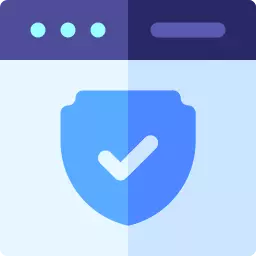Accenture Fundamentals of Networking Security and Cloud Questions 2025
Fundamentals of Networking Security and Cloud Questions and Answers 2025
Accenture has change its recruitment pattern for the 2025 batch pass outs. They have introduced some new sections in the process. One of this section is Fundamentals of Networking Security and Cloud.
On this page we have given the sample practice questions of Fundamentals of Networking Security and Cloud, make sure you prepare well for this section. As this will be an elimination round.

Client-Server Network

Authentication

Authorization

Firewalls
Details for Fundamentals of Networking Security
and Cloud Computing Round:
| Technical Assessment | No. of questions |
|---|---|
| Networking Security and Cloud | 11 Questions |
| Time limit | 45 minutes(shared) |
| Difficulty | moderate |
Syllabus for Networking Security and Cloud
Share resources in a client server network
Computer data, information, or hardware devices that may be easily accessible from a remote computer over a local area network (LAN) or workplace intranet are referred to as shared resources, also known as network resources.
Peer-to-peer (P2P) sharing and the client-server network paradigm are the two network communication technologies used to share files and printers.
Sharing network resources necessitates adhering to the following guidelines:
Organizational security:
Unauthorized access to shared resources is a constant threat. To give efficient parameters, security methods should be established.
Compatibility:
Various client-server operating systems can be deployed, but in order to access shared resources, the client must have a compatible OS or application else, the client could run into problems .
Mapping:
Mapping allows you to access any shared OS hardware drive, file, or resource, but it requires a shared destination address and naming conventions.


Computer data, information, or hardware devices that may be easily accessible from a remote computer over a local area network (LAN) or workplace intranet are referred to as shared resources, also known as network resources.
Peer-to-peer (P2P) sharing and the client-server network paradigm are the two network communication technologies used to share files and printers.
Sharing network resources necessitates adhering to the following guidelines:
- Organizational security:
Unauthorized access to shared resources is a constant threat. To give efficient parameters, security methods should be established.
- Compatibility:
Various client-server operating systems can be deployed, but in order to access shared resources, the client must have a compatible OS or application else, the client could run into problems .
- Mapping:
Mapping allows you to access any shared OS hardware drive, file, or resource, but it requires a shared destination address and naming conventions.
Authentication

The process of verifying a user’s identity is known as authentication. It’s the process of connecting a set of identifying credentials with an incoming request. On a local operating system or within an authentication server, the credentials provided are compared to those on a file in a database containing the authorized user’s information.
- When a server wants to know exactly who is accessing their information or site, it uses authentication.
- When a client wants to know that the server is the system it purports to be, authentication is used.
- The user or machine must confirm its identity to the server or client during authentication.
- A user name and password are typically used to authenticate a server. Cards, retina scans, voice recognition, and fingerprints are some of the other ways to authenticate.
- Authentication has no bearing on the tasks or files that an individual is allowed to access. Authentication simply establishes and confirms the identity of the person or system.

The process of verifying a user’s identity is known as authentication. It’s the process of connecting a set of identifying credentials with an incoming request. On a local operating system or within an authentication server, the credentials provided are compared to those on a file in a database containing the authorized user’s information.
- When a server wants to know exactly who is accessing their information or site, it uses authentication.
- When a client wants to know that the server is the system it purports to be, authentication is used.
- The user or machine must confirm its identity to the server or client during authentication.
- A user name and password are typically used to authenticate a server. Cards, retina scans, voice recognition, and fingerprints are some of the other ways to authenticate.
- Authentication has no bearing on the tasks or files that an individual is allowed to access. Authentication simply establishes and confirms the identity of the person or system.
Authorization
The practise of granting someone permission to do or have something is known as authorization. A system administrator in a multi-user computer system determines which users have access to the system and what privileges they have (such as access to which file directories, hours of access, amount of allocated storage space, and so forth).
- The process by which a server assesses whether a client has permission to use a resource or access a file is known as authorization.
- Authentication is frequently used in conjunction with authorization so that the server knows who the client is who is requesting access.
- Authorization may need different types of authentication; passwords may be necessary in certain circumstances but not in others.
- There is no authorization in some circumstances; any user can use a resource or access a file simply by requesting it.
- The majority of web pages on the Internet do not require any kind of authentication or authorization.


The practise of granting someone permission to do or have something is known as authorization. A system administrator in a multi-user computer system determines which users have access to the system and what privileges they have (such as access to which file directories, hours of access, amount of allocated storage space, and so forth).
- The process by which a server assesses whether a client has permission to use a resource or access a file is known as authorization.
- Authentication is frequently used in conjunction with authorization so that the server knows who the client is who is requesting access.
- Authorization may need different types of authentication; passwords may be necessary in certain circumstances but not in others.
- There is no authorization in some circumstances; any user can use a resource or access a file simply by requesting it.
- The majority of web pages on the Internet do not require any kind of authentication or authorization.
Firewalls

A firewall is a network security device that monitors and filters incoming and outgoing network traffic according to security regulations set by an organization. A firewall, at its most basic level, is the barrier that separates a private internal network from the public Internet.
Types of Firewalls:
Packet filtering:
A small amount of data is analyzed and distributed according to the filter’s standards.
Proxy Service:
Network security system that protects while filtering messages at the application layer.
Stateful Inspection:
Dynamic packet filtering that monitors active connections to determine which network packets to allow through the Firewall.
Next Generation Firewall (NGFW):
Deep packet inspection Firewall with application-level inspection.
Preparation Section
Click on Topics below to practice Previous Year Accenture Questions….
FAQ's on Accenture Fundamentals of Networking Security and Cloud
Question: Is this an Elimination Round?
Answer:-
Yes, all the round of Accenture Test is an elimination round.
Does Accenture have Sectional Cut-Off?
Answer:-
Yes, Accenture have sectional and even sub-sectional cut-off for the first section i.e; Cognitive+Technical Assessment. For clearing this section you have to clear the sectional cut-off and even the sub-sectional cut-off. If you fail to do so, you are not allowed to continue further in the selection process.
What are the topics which can be asked in this Round of Accenture?
Answer:-
This section consist questions on
- Fundamentals of Network Security and Cloud, like how to setup firewalls,
- Difference between authorization and authentication,
- Network monitoring, traffic usage etc. selection process.
Which section of Accenture Test will have questions from Networking and Cloud Computing?
Accenture Written Exam is divided into 5 sections. These are as follows:
- English Ability – 17 Ques
- Critical Reasoning and Problem Solving – 18 Ques
- Abstract Reasoning – 15 Ques
- Common Application and MS Office – 12 Ques
- Pseudo Code – 18 Ques
- Network Security and Cloud – 10 Ques
The Questions will be in Network Security and Cloud.
Login/Signup to comment

 Apply For Jobs
Apply For Jobs Get Hiring Updates
Get Hiring Updates













From where I can learn this parts for accenture??- Fundamental of networking security and cloud, Common application and MS office
Hey there, Kindly refer this Link and This one too Link
if we clear the first round i.e cognitive round then we are eligible for 4.5 lpa or not
Hey there, Kindly refer this Link.
Is coding round an eliminatory round?
Hey, yes Coding round in Accenture is an elimination round.
I am commerce student , which section of accenture test will have questions from Pseudo code?
Kindly refer to this link
Also, Click here for hiring updates
Does dh-system and application services associate role in accenture have technical and coding round or only cognitive and communication assessment
Hey?,
You will get all details here: Accenture-Detailed-Process
Is the communication assessment is elimination round or not?
Hey, communication round is not elimination round.
In case of any doubt you can WhatsApp on 8448440710.
In Accenture on-campus placement drive, does Interview take place on the same day as the Cognitive, Technical and Coding Test?
Hey, No the interview does not take place on the same day the interview will happen after 1-2 days. ?
what are all the elimination round in accenture
Hey, all the round are eliminative except communication. ?
Is the communication assesment round of accenture a elimination round or not?
Hey, no accenture communication round is not elimination round.
communication assesment round is a non elimination round
Hey, yes it is the only non elimination round.?